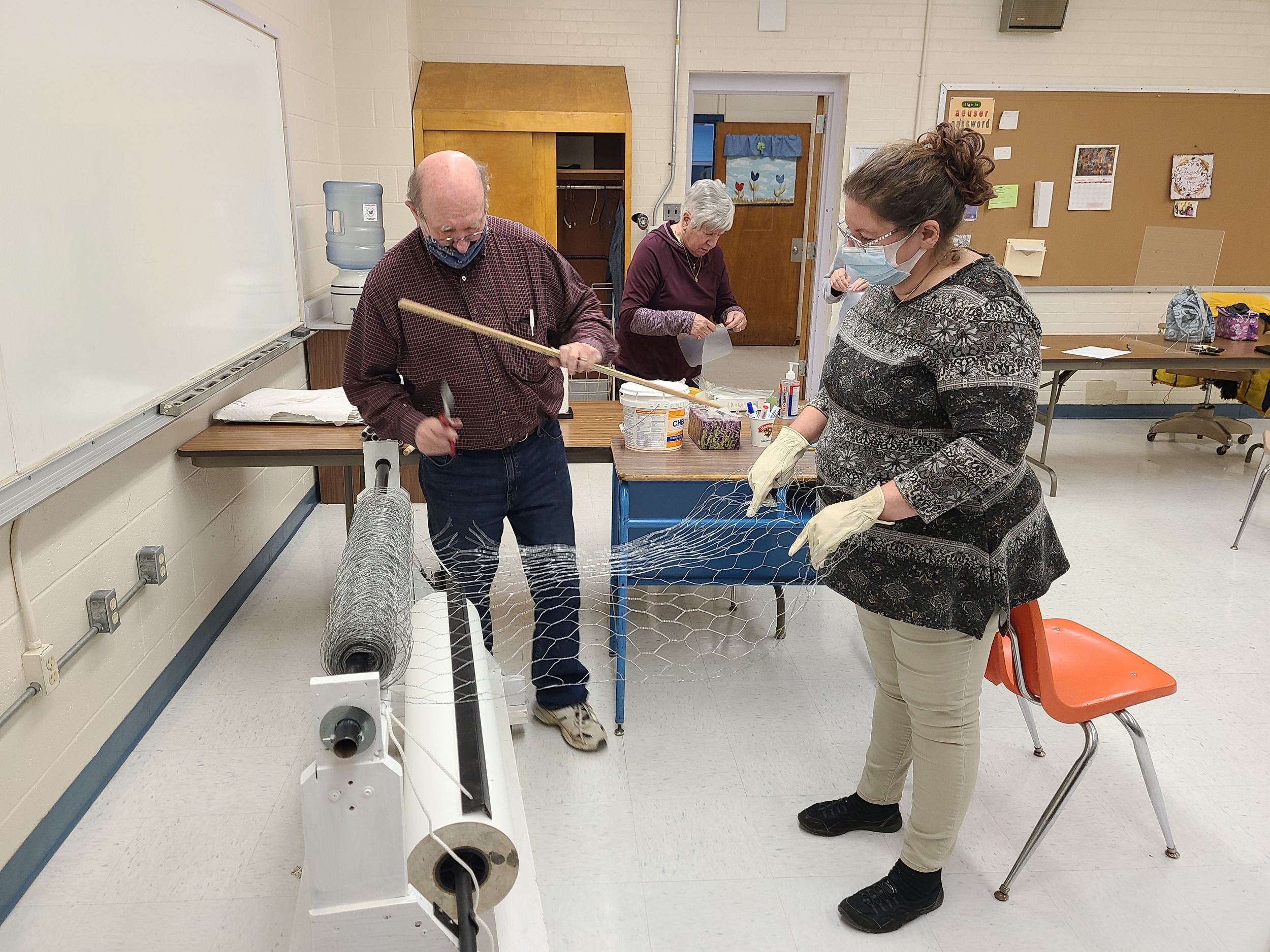
MADAWASKA, Maine — While techniques may have changed over the centuries, Acadians in the St. John Valley are keeping traditions alive and getting big heads in the process — literally.
Victorine Dionne hosted the first Grosses Têtes (big heads) class in Madawaska in 2011, utilizing the art of paper mache to create giant heads that revelers wear during Acadian celebrations. The first big heads caught the eyes of Gerald Fongemie and his wife Bernadette, who enrolled in the class the following year.
“If you want to get your hands in and evolve your art, that’s one way to do it,” said Fongemie, who now leads the class on Tuesdays from 6 to 8 p.m. at the Madawaska Adult Education Center. “I’ve actually got my hands in about 40 of them so far.”
Grosses Têtes date back to the 15th century when the figures depicted scenes from the Bible. Eventually, the heads became representative of a region or neighborhood. Today, the heads are a staple on the streets of Madawaska during the Acadian Festival’s Tintamarre, a noisy parade involving improvised instruments and noise makers.
In 2021, the large paper heads were missing at the Tintamarre.
“All these other years had Grosses Têtes walking in them,” said Fongemie. “This was the first year that we didn’t walk in the parade.”
For Fongemie and his students, the class is about celebrating French heritage. Caribou High School French and Spanish teacher Jonna Boure teaches Acadian history to teens, many of whom are unaware of their Acadian ancestry.
“I didn’t even know anything about it until I moved up here,” said Boure, who has made it her mission to help reclaim the Franco-American language and culture for her students and family.
Boure wanted to create Grosses Têtes with cultural significance, so she chose Evangeline for her subject, from the famous Henry Wadsworth Longfellow poem about the Acadian deportation.
“It’s unfortunate but a lot of people don’t know that their ancestors were all involved in that deportation,” said Fongemie, “and for all that misery they went through, you forget that easy enough.”
Fongemie is determined to cultivate interest in the tradition of Grosses Têtes. He is working with the Madawaska Recreation Department on a summer event for children. Using molds and paper mâché, kids will create and paint masks to wear in the Tintamarre.
The idea to use masks for kids is in direct response to one of the biggest reasons Grosses Têtes were absent in this year’s Tintamarre. The heads were simply too heavy to wear the way they used to be made.
“Either they got heavier or we got weaker,” joked Fongemie. “They’re too heavy for us to wear in the parade anyway so, I figure, well, let’s do something as light as we can.”
New Grosses Têtes techniques use chicken wire and small plastic piping on a broomstick, making them much easier to parade around town than their predecessors.
Yolonde Cyr was hesitant about joining the class before learning of their new lightweight design.
“I knew I would like it too, but I wouldn’t be able to carry it. So, when this was brought up, I was like ‘Yeah!’”
Fongemie is also considering donating heads made in class to the town, so anyone interested could pick up a head for the Tintamarre and walk around with one. Even without a Grosses Têtes, Fongemie encourages festival goers to join in the Tintamarre.
“Just make noise, you can beat on drums or whatever, just make noise. We’re French, we’re here.”
Fongemie hopes to wrap up the heads by Christmas, but says there’s still time to join.







